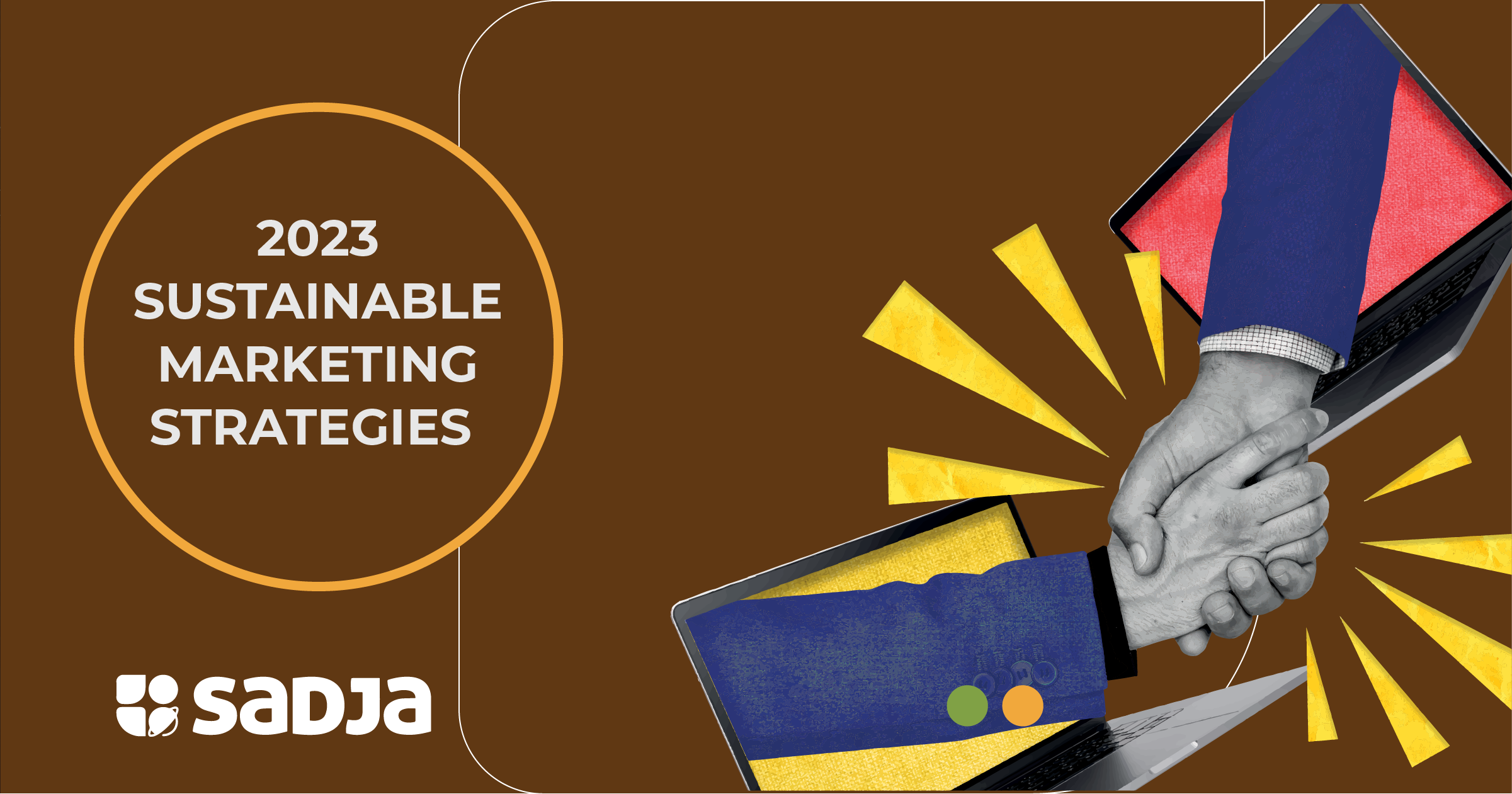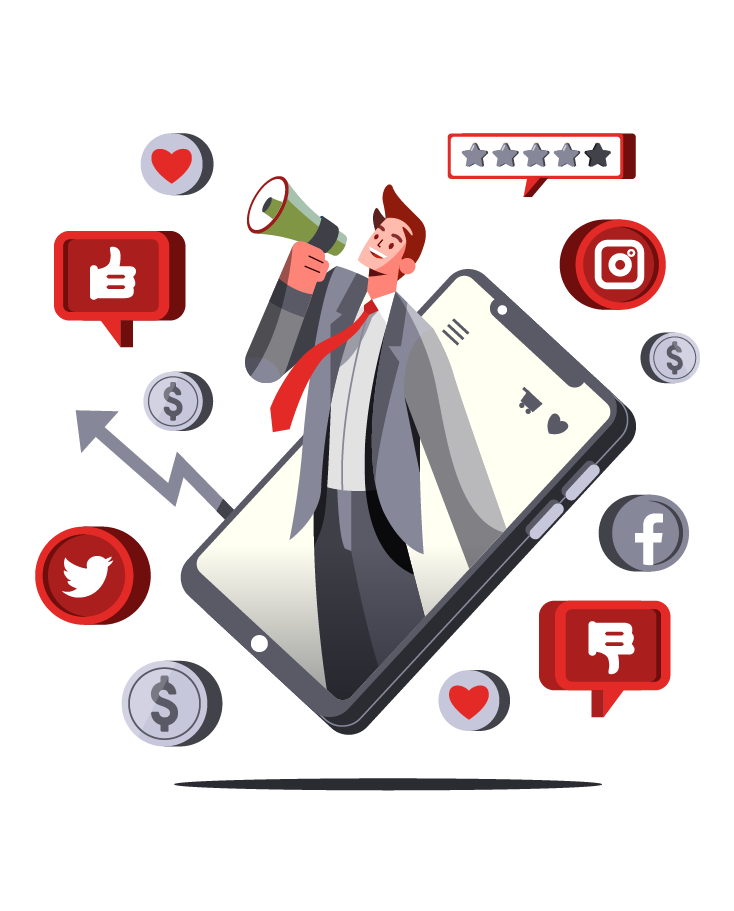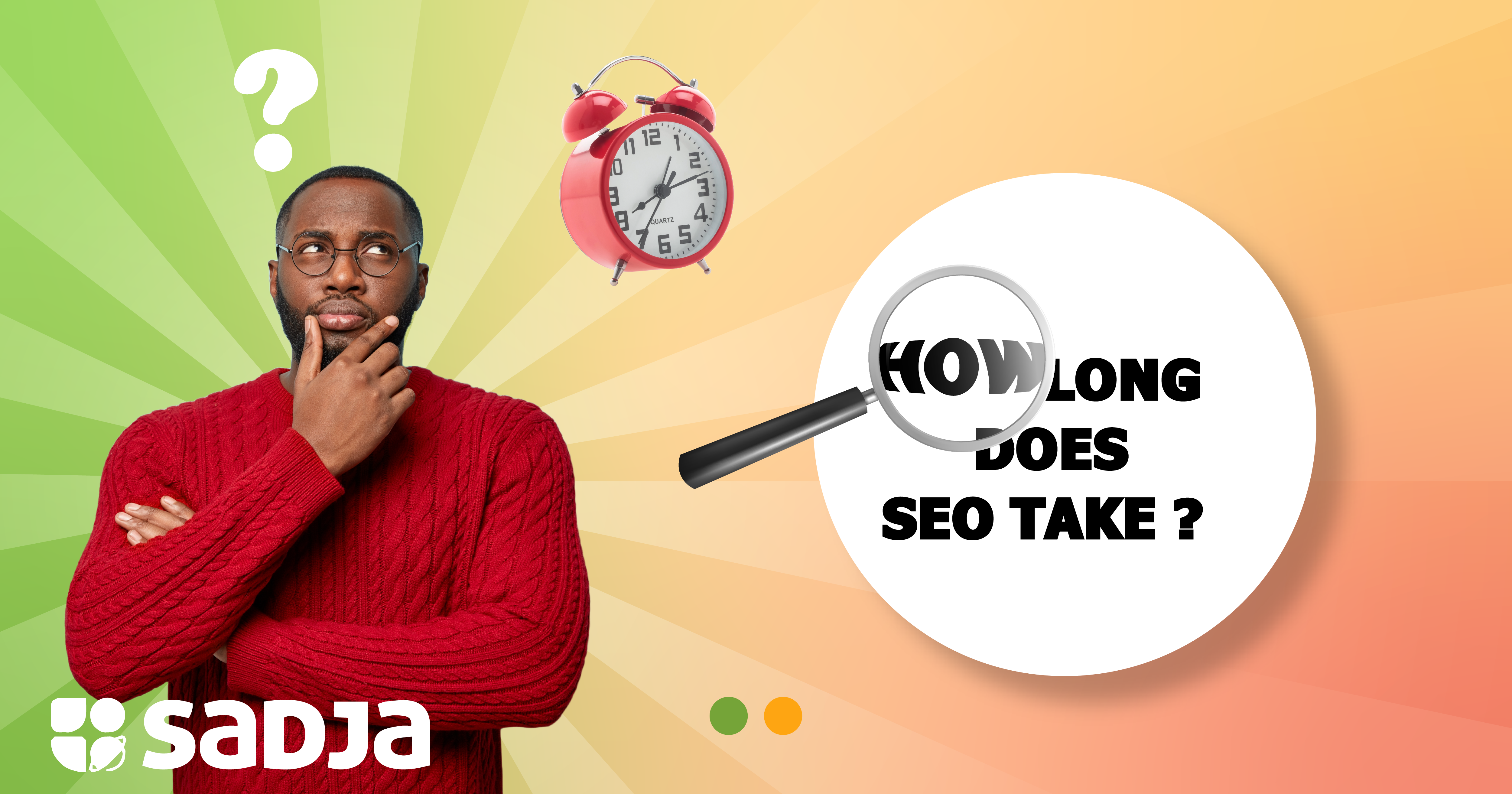What is sustainable marketing?
Have you spent a little more on a product because it is recyclable or locally sourced? If yes, you have experienced sustainable marketing. Promoting environmentally and socially responsible practices, products and values is the key principle to sustainable marketing.
What Are Consumers Saying About Sustainable Marketing?
According to Deloitte’s study on consumer-based sustainable practices, between 2020 and 2021, 75% of consumers recycled waste, while 64% cut down consumption of single-use products within that period.
From a 1034-respondent consumer survey conducted by Hubspot, 46% of respondents indicated that they are more likely to buy from companies that have a sense of taking care of the environment.
28% of the respondents also indicated that a brand’s ethical production and capability to reduce environmental impact are key considerations informing their buying decision.
While Millenials care most about the ethical production of products, Gen-X is concerned most about the impact of your brand on the environment.
IBM’s study of more than 16,000 respondents from ten cou tries also presents similar findings about consumers’ perspectives on sustainable marketing.
49% of consumers pay an average of 59% premium for products deemed to be environmentally sustainable, and it is not only the rich, as four out of ten of the consumers are categorized in the lower income bracket.
77% of the consumers are willing to make socially responsible choices in their homes with the help of businesses by providing personal incentives, more product options and inclusion in decision-making.
While 21% of consumers consider their employers socially responsible, 67% are willing to apply and accept job offers from organizations that support or have a sense of environmental sustainability.
Hence, to position your brand for sustainability, you must invest in social inclusion and fulfilling society’s rising demands on ethical production and environmental well-being.
Green Marketing Vs. Sustainable marketing [the difference]
Admittedly, green marketing and sustainable marketing are sometimes used interchangeably. However, they have a significant difference.
Green marketing is part of sustainable marketing and encompasses strategic practices thared toward protecting the environment and promoting environmental awareness.
On the other hand, sustainable marketing includes green marketing but also advances beyond the environment to entail social and economic sustainability.
Sustainable Marketing Strategies
Imagine five years from now. Will your customers appreciate that your business exists to provide value, or will it be nowhere to be heard? Let’s look at the five principles that will help you develop sustainable marketing.
Consumer-oriented marketing
Customer-value marketing
Innovative marketing
Sense of mission marketing
Societal marketing
Consumer-Oriented Marketing
Have you considered what your customers say, wish, and recommend for your business? As you may have heard, the customer is always correct. However, your business grows when you shift from fulfilling your business needs to fulfilling customer needs.
Think of a brand like Netflix. Implementing the consumer’s demand for online movie streaming may not have translated to more revenue from the customer’s perspective.
Steps to ensuring consumer-oriented marketing
Establish a feedback mechanism- You will never know how your customers feel about your products until you allow them to do it. Feedback can be obtained from surveys, questionnaires or online reviews through social media or your e-commerce website.
Track feedback- Since you may not meet all your customer’s expectations, it’s important to evaluate their feedback, identify what you can improve, and prioritize the areas of improvement for a better customer experience.
Implement- Let your customers know when you have improved or resolved their complaints. Whether it is a new feature, discounted prices, or quality improvement, your customers would appreciate it.
Measure- What difference is the change you implemented making? Effective problem resolution is expected to yield results. So, you must identify metrics that will help you track the progress of your business with the changes you make.
Improve- Remember there is no en,d to growing your business. Even if your change implementation is already yielding massive success, you have to stay ahead of technology, policies, and customer requests for continuous improvement.
Customer – Value Marketing
Have you ever thought about why you buy things? Because you want to solve a problem. Right? Your customers are looking for a worth-the-price solution and providing that solution should be your business goal.
Before your audience considers buying from you, they would want to understand the value of your product. Therefore, they will buy because they can see the value rather than because they can afford it.
As you deliver value to your customers, they will value your business by recommending your products, giving positive reviews, and remaining loyal. Make your customers want to come back for more without counting on expenses.
Here are ways you can drive customer-value marketing:
Offering emotional connection- When is the last time you sent a personalized note to your loyal customer? Your customers need to see the difference you are making from your competitors. Connecting with them through appreciation boosts their loyalty.
Provide exclusive offers- How about offering value-packed offers? For instance, a toothbrush can be an added offer to buying toothpaste. You can also offer free deliveries. Such offers motivate your customers and help you sell more quickly.
Provide seasonal discounts- How about making special days for your customers memorable? If you do well in your business, then sharing the achievement by setting aside some budget for a seasonal event will be of value to your customers.
Build a social community- Connect with your customers through social media and let them share their experiences with your products. For example, you can post challenges for your customers and target audience to participate in exchange for a voucher or a gift.
Innovative Marketing
You can market your products while developing new products or redesigning a product to fit customer needs, behavior, and trends. Untraditional marketing can be a launch event or creating content targeted to specific groups of people to see who is interested.
Here are different ways you can employ innovative marketing:
Rebranding- Do you want to establish the strength and weaknesses of your products or reach a new target audience? Consider changing your product packaging or your mission statement to reposition your brand.
Being an industry expert- To remain at the top of the competition, you can invest in building your relationship with customers by winning their trust.
From releasing high-quality products to writing informative, valuable and reliable blog posts to market, the products will position you as a brand expert. You can also introduce training on the products and engage your target audience on social media for visibility and credibility.
Introducing customer loyalty programs- You can encourage your customers to sign up for a loyalty membership program by offering a trial period for your products to the customers registering for the program.
A loyalty program will encourage more sales and allow potential customers to interact with and rate your products.
Partner with non-profit organizations- Is a non-profit organization doing work related to your product offering? Partnering with such an organization is a social responsibility and can help you reach a wider audience.
As part of innovative marketing also, you can allow the non-profit to use your product at discounted prices to create more awareness and encourage the use of the product.
Change your pricing- You can reach a potential audience with the news of lower prices to encourage buying your product.
By targeting the audience interested in your product but has not yet purchased it, you can make more sales and attract new prospects during the new price advertising.
You can have your e-commerce website redesigned uniquely to communicate value to potential customers, increase the rate of returning visitors and drive more revenue to your business.
Sense-of-mission Marketing
Rather than being product-oriented, sense-of-mission marketing demands that your mission captures a larger social context. To redefine your mission, you may partner with or hire an entrepreneur with a high sense and passion for a social duty.
By connecting with your target audience more in-depth and meaningfully, you establish a lasting impression or image for your brand. Tying your brand to a meaningful mission also helps to attract employees who identify with your sense of mission.
Sense-of-mission marketing drives your entire brand to achieve its long-term goals and provide value to the customers as they develop confidence in your products. In addition, it will attract like-minded individuals and promote your sense of existence.
Societal Marketing
While profits matter, societal marketing demands that you place society’s needs at the forefront of your organization’s goals. As a societal responsibility, you must promote your society’s well-being better than your competitors.
Societal marketing builds the picture of your brand and positions you to remain competitive in the long term. A society can identify with the value you offer and will continue supporting your products as they build a loyalty base.
Importance of Sustainable Marketing
In a nutshell, here are the benefits of sustainable marketing:
Consumer- Society wants a sustainable environment and will reward your business with loyalty and continued support for as long as your offering doesn’t conflict with their demands. In addition, sustainable marketing instills a sense of security in the consumer.
Environment-A socially responsible brand will stay within the promise to deliver quality products through ethical production to take care of the environment. A friendly environment is a long-term investment for both the consumer and your business.
Brand- Your business can only be considered sustainable if, five years from now, it will still operate within its mission. By remaining socially responsible, you are preserving the brand’s image and will attract like-minded individuals to achieve your business goals.
Which Brands Depict Sustainable Marketing? [Examples]
Apple
What comes into your mind every time you see Apple’s logo and mission? A sense of sustainability. Right? Its mission is not just said but also emphasized on Apple’s website to elaborate on the why behind its existence.
Apple connects its brand to sustainability through the power of words and visuals. “Amplifying Your Eco Voice” and “Every voice matters” are words that create clear pictures in your mind and make sense whenever you see a product from Apple.
Developing quality products remains Apple’s goal as it is dedicated to delivering up to its promise of sustainability. Apple’s sustainable marketing speaks for the brand and positions it as an expert lead as its product development is tied to a long-term mission.
Patagonia
There are so many clothing brands, but what makes Patagonia unique? From its mission statement, “Making a positive impact on the planet”, you would want to understand what Patagonia is doing to impact the world positively.
Again, from its website, Patagonia emphasizes its mission through a catchy video and an emphasis on its sustainable products. When you meet Patagonia’s landing page video clip, you emotionally identify with what is happening worldwide.
Here is a sneak peek at what Patagonia does in line with its mission:
Donating part of their sales to helping “the planet.”
Voluntarily publishing results of their supply chain audits regardless of how they may turn out
.Focusing on the long-term goals of sustainable production
General Overview
You need sustainable marketing for your business if you must withstand the changing consumer demands for a sustainable environment. Therefore, the emphasis is on what you offer and its impact on the environment with the consumer in mind.
While you may offer a quality product, what is there for the consumer to understand its value and develop confidence and trust in it? Sustainable marketing cuts across your mission, marketing strategies, and product.
Need help with redefining your brand? You can count on Sadja WebSolutions for authentic branding that creates a direct link between your mission, products, and a sustainable environment.
 +256 206 300885
+256 206 300885



